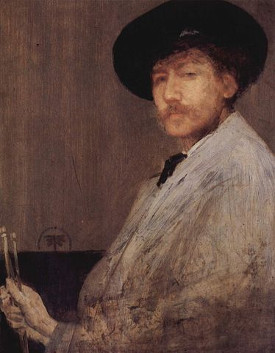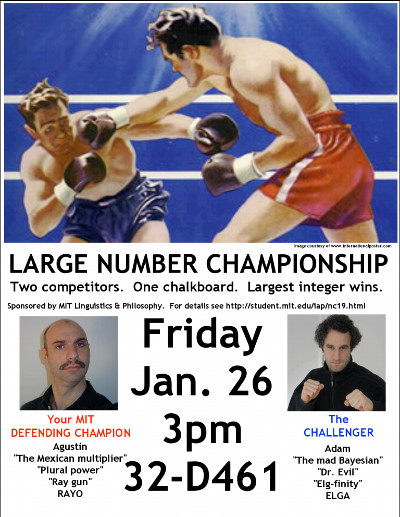
A snob asked James McNeill Whistler, “Whatever possessed you to be born in a place like Lowell, Massachusetts?”
He said, “I wished to be near my mother.”

A snob asked James McNeill Whistler, “Whatever possessed you to be born in a place like Lowell, Massachusetts?”
He said, “I wished to be near my mother.”
British infantry sergeant Harry Neale says goodbye to his 10-year-old daughter Lucy, April 4, 1917:
At about six o’clock in the evening, my father called me in and said he’d got to go back to Kidderminster, back to barracks. ‘Will you walk with me a little way, just up the hill, will you come with me?’ Of course I would. He said goodbye to my mother, who was crying, and we went off down the road and then up this long hill. It was a ten-minute walk, I suppose, but we didn’t hurry, we just walked slowly up the hill and I really can’t remember what we talked about. I held on to his hand so tight, and when we got to the top, he said, ‘I won’t take you any further, you must go back now, and I’ll stand here and watch you until you’re out of sight,’ and he put his arms round me and held me so close to him; I remember feeling how rough that khaki uniform was.
‘You must go now, wave to me at the bottom, won’t you?’ I went, I left him standing there and I went down the hill and I kept looking back and waving and he was still there, just standing there. I got to the bottom and then I’d got to turn off to go to where we lived, so I stopped and waved to him and he gestured as much as to say, ‘Go on, you must go home now,’ ever so gently gestured and then he waved and he was still waving when I went, and that was the last time I ever saw him.
Badly wounded in battle, he died of dysentery in East Africa that October.
(From Richard van Emden, The Quick and the Dead, 2011.)

stirious
adj. like an icicle

In January 2007, inspired by this article by computer scientist Scott Aaronson, philosophers Agustín Rayo of MIT and Adam Elga of Princeton joined in the “large number duel” to come up with the largest finite number ever written on an ordinary-sized chalkboard.
The rules were simple. The two would take turns writing down expressions denoting natural numbers, and whoever could name the largest number would win the duel. No primitive semantic vocabulary was allowed (so that it would be illegal simply to write the phrase “the smallest number bigger than any number named by a human so far”), and the two agreed not to build on one another’s contributions (so neither could simply write “the previous entry plus one”).
Elga went first, writing the number 1. Rayo countered with a string of 1s:
111111111111111111111111111111111111111111111111111111111111
and Elga erased a line through the base of half this string to produce a factorial:
1111111111111111111111111111!!!!!!!!!!!!!!!!!!!!!!!!!!!!!!!!
The two began defining their own functions, and toward the end Rayo wrote this phrase:
The smallest number bigger than any number that can be named by an expression in the language of first-order set theory with less than a googol (10100) symbols.
With some tweaking, this became the winning entry, now enshrined as “Rayo’s number.”
“It was a great game,” Elga said after the match. “Heated at times, but nevertheless, a really great game.”
The use of philosophy was “crucial,” Rayo said. “The limit of math ability was reached at the end. Knowing a bit of philosophy, that was the key.”
Asked whether he thought his entry had set the Guinness world record, “It’s hard to be sure,” Rayo said, “but the number is bigger than any number I have ever seen.”
(Thanks, Erik.)
“Personalize your sympathies; depersonalize your antipathies.” — W.R. Inge
In 1957, the U.S. Patent Office wanted to design a computer that could track down earlier references to an idea submitted by an inventor. This is difficult, because patents are described in ordinary English, which uses many ambiguous and imprecise terms. The word glass, for instance, refers to a material, but also to any number of things made of that material, and even to objects that have nothing to do with glass, such as plastic eyeglasses and drinking glasses.
To solve this problem, engineer-lawyer Simon M. Newman planned a synthetic language called Ruly English that gave one and only one meaning to each word. In ordinary English the preposition through has at least 13 meanings; Newman proposed replacing each of them with a new Ruly term with a single meaning. The Ruly word howby, for example, means “mode of proximate cause.” It might replace the unruly terms by(take by force) or with (to kill with kindness) or through (to cure through surgery), but it always has the same basic sense.
Newman had to coin other terms to take account of differing points of view. A watch spring and a bridge girder are both flexible to some degree, but using the word flexible to describe both would leave a computer at a loss as to how they compare. Newman coined the Ruly word resilrig to cover the whole scale, from extreme flexibility to extreme rigidity, adding prefixes such as sli (slightly) and sub (substantially). So in Ruly English a bridge girder would be sliresilrig and a watch spring subresilrig. A computer that knew these terms would not be confused into thinking that a thin bridge girder was more flexible than a rigid watch spring.
“Humans are not expected to read or speak Ruly English,” noted Time in 1958. “To them, unruly English will always be more ruly.”
(Newman describes his plan briefly here. I don’t know how far he got.)
“I saw you take his kiss!” “‘Tis true.”
“O modesty!” “‘Twas strictly kept:
He thought me asleep — at least, I knew
He thought I thought he thought I slept.”
— Coventry Patmore

In 1928, 199 runners set out on a perilous 3,400-mile footrace across America, from Los Angeles to Chicago and on to New York. The winner would receive $25,000 — if anyone finished at all. In this week’s episode of the Futility Closet podcast we’ll follow the Trans-American Footrace, better known as the Bunion Derby, billed as the greatest footrace the world had ever known.
We’ll also learn some creepy things about spiders and puzzle over why one man needs three cars.

From C.S. Lewis’ A Grief Observed, a collection of reflections on the loss of his wife, Joy, in 1960:
It is hard to have patience with people who say ‘There is no death’ or ‘Death doesn’t matter.’ There is death. And whatever is matters. And whatever happens has consequences, and it and they are irrevocable and irreversible. You might as well say that birth doesn’t matter. I look up at the night sky. Is anything more certain that in all those vast times and spaces, if I were allowed to search them, I should nowhere find her face, her voice, her touch? She died. She is dead. Is the word so difficult to learn? …
Talk to me about the truth of religion and I’ll listen gladly. Talk to me about the duty of religion and I’ll listen submissively. But don’t come talking to me about the consolations of religion or I shall suspect that you don’t understand.
He published it originally under the pseudonym N.W. Clerk, a pun on the Old English for “I know not what scholar.”

Joseph Grinnell’s Game Birds of California (1918) notes that the avocet is known as the lawyer bird because of “its long bill and its oft-repeated vociferations.”